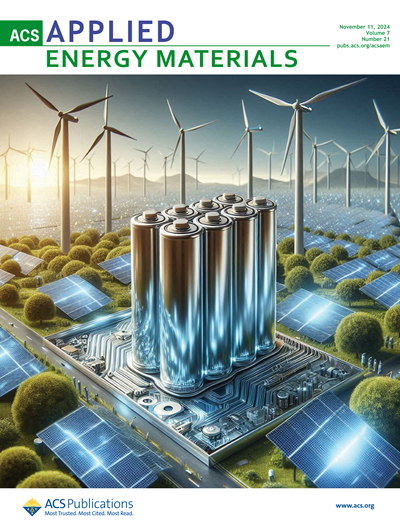Brain Region-Specific Expression Levels of Synuclein Genes in an Acid Sphingomyelinase Knockout Mouse Model: Correlation with Depression-/Anxiety-like Behavior and Locomotor Activity in the Absence of Genotypic Variation
IF 5.4
3区 材料科学
Q2 CHEMISTRY, PHYSICAL
引用次数: 0
Abstract
Accumulating evidence suggests an involvement of sphingolipids, vital components of cell membranes and regulators of cellular processes, in the pathophysiology of both Parkinson’s disease and major depressive disorder, indicating a potential common pathway in these neuropsychiatric conditions. Based on this interaction of sphingolipids and synuclein proteins, we explored the gene expression patterns of α-, β-, and γ-synuclein in a knockout mouse model deficient for acid sphingomyelinase (ASM), an enzyme catalyzing the hydrolysis of sphingomyelin to ceramide, and studied associations with behavioral parameters. Normalized Snca, Sncb, and Sncg gene expression was determined by quantitative PCR in twelve brain regions of sex-mixed homozygous (ASM−/−, n = 7) and heterozygous (ASM+/−, n = 7) ASM-deficient mice, along with wild-type controls (ASM+/+, n = 5). The expression of all three synuclein genes was brain region-specific but independent of ASM genotype, with β-synuclein showing overall higher levels and the least variation. Moreover, we discovered correlations of gene expression levels between brain regions and depression- and anxiety-like behavior and locomotor activity, such as a positive association between Snca mRNA levels and locomotion. Our results suggest that the analysis of synuclein genes could be valuable in identifying biomarkers and comprehending the common pathological mechanisms underlying various neuropsychiatric disorders.酸性鞘磷脂酶基因敲除小鼠模型中突触核蛋白基因的脑区特异性表达水平:在没有基因型变异的情况下,抑郁/焦虑样行为与运动活动的相关性
越来越多的证据表明,鞘磷脂是细胞膜的重要组成部分,也是细胞过程的调节剂,它参与了帕金森病和重度抑郁症的病理生理学过程,这表明这些神经精神疾病中存在潜在的共同途径。基于鞘磷脂和突触核蛋白之间的这种相互作用,我们探索了α-、β-和γ-突触核蛋白在缺乏酸性鞘磷脂酶(ASM)(一种催化鞘磷脂水解为神经酰胺的酶)的基因敲除小鼠模型中的基因表达模式,并研究了它们与行为参数之间的关联。通过定量聚合酶链反应测定了12个脑区的归一化Snca、Sncb和Sncg基因表达,这些脑区分别是性别混合的同卵(ASM-/-,n = 7)和异卵(ASM+/-,n = 7)ASM缺陷小鼠,以及野生型对照组(ASM+/+,n = 5)。所有三个突触核蛋白基因的表达都具有脑区特异性,但与ASM基因型无关,其中β-突触核蛋白的表达水平总体较高,差异最小。此外,我们还发现了脑区基因表达水平与抑郁和焦虑样行为及运动活动之间的相关性,如Snca mRNA水平与运动活动之间的正相关。我们的研究结果表明,对突触核蛋白基因的分析对于确定生物标志物和理解各种神经精神疾病的共同病理机制很有价值。
本文章由计算机程序翻译,如有差异,请以英文原文为准。
求助全文
约1分钟内获得全文
求助全文
来源期刊

ACS Applied Energy Materials
Materials Science-Materials Chemistry
CiteScore
10.30
自引率
6.20%
发文量
1368
期刊介绍:
ACS Applied Energy Materials is an interdisciplinary journal publishing original research covering all aspects of materials, engineering, chemistry, physics and biology relevant to energy conversion and storage. The journal is devoted to reports of new and original experimental and theoretical research of an applied nature that integrate knowledge in the areas of materials, engineering, physics, bioscience, and chemistry into important energy applications.
 求助内容:
求助内容: 应助结果提醒方式:
应助结果提醒方式:


